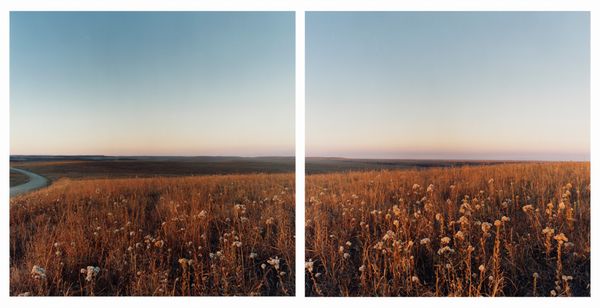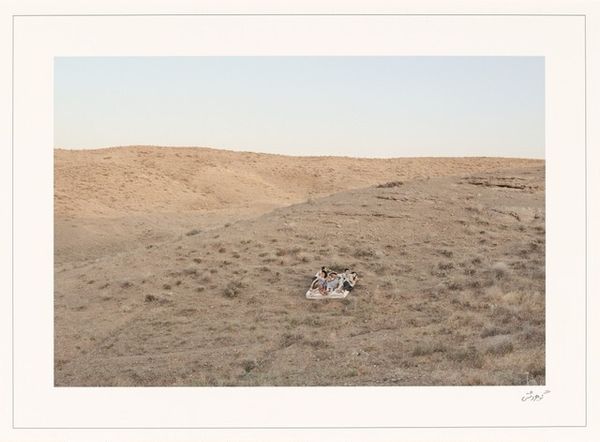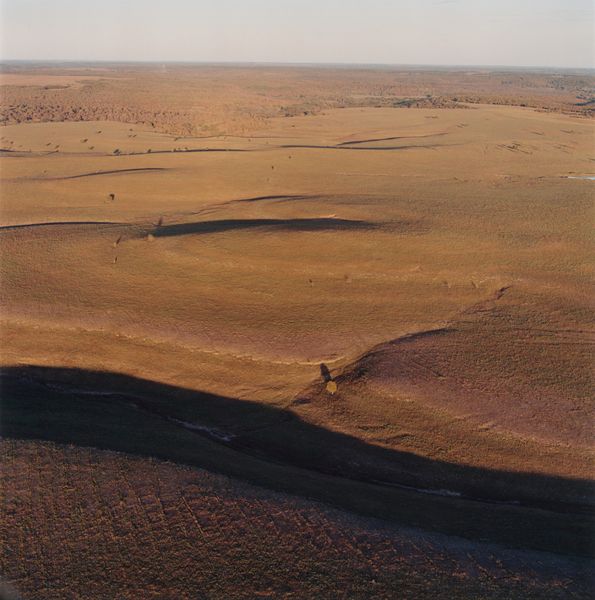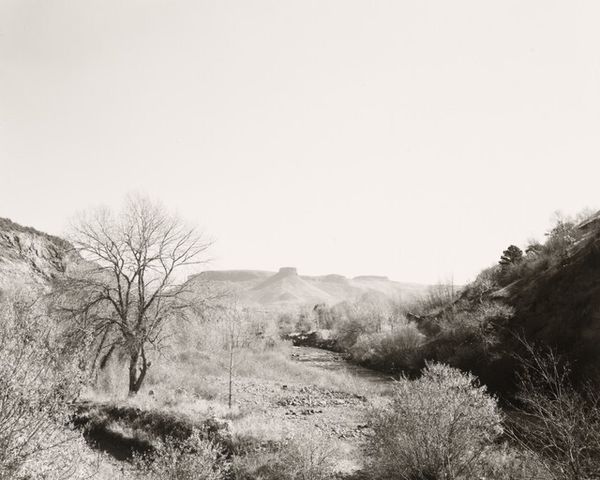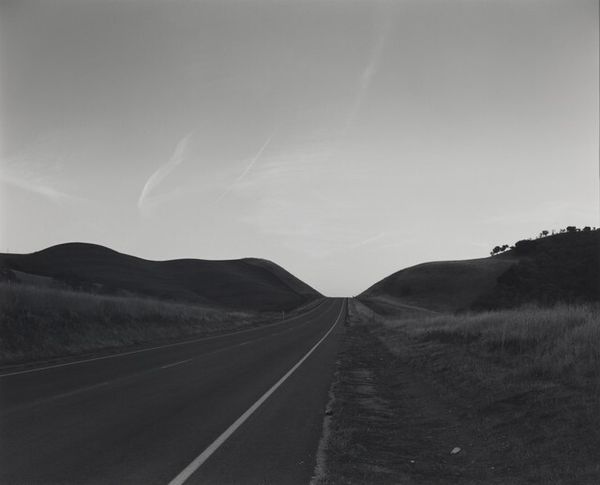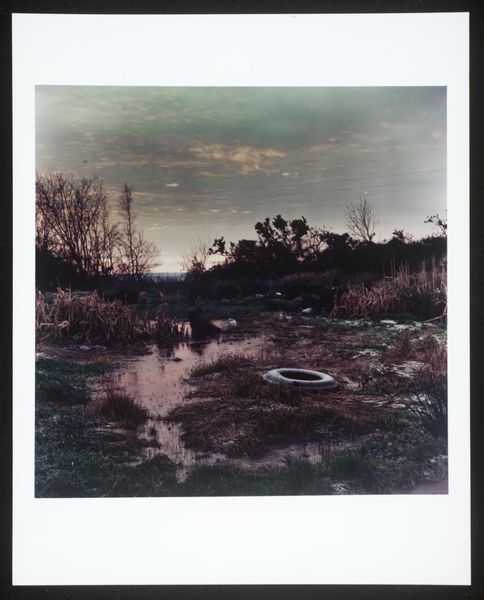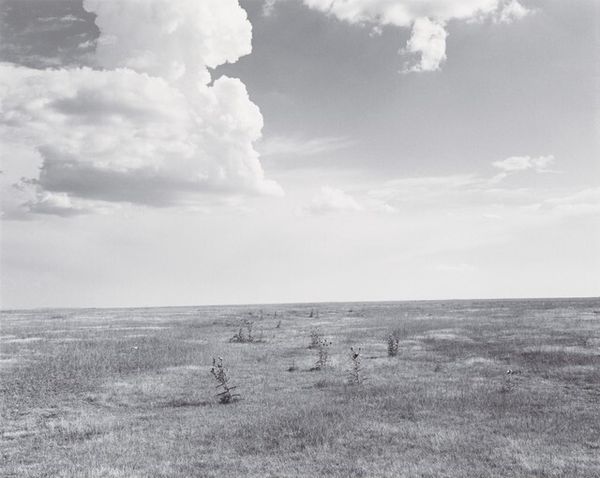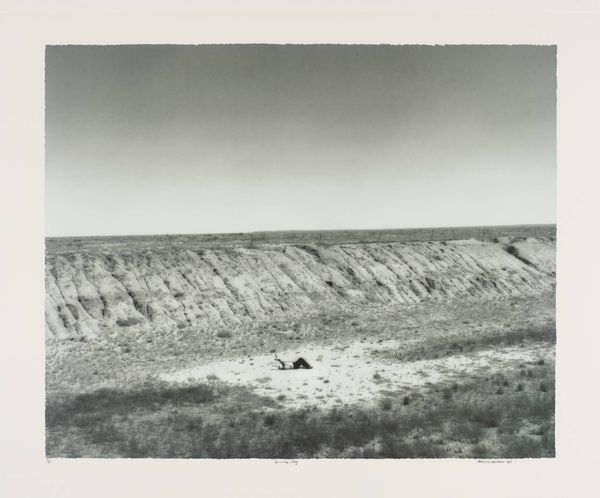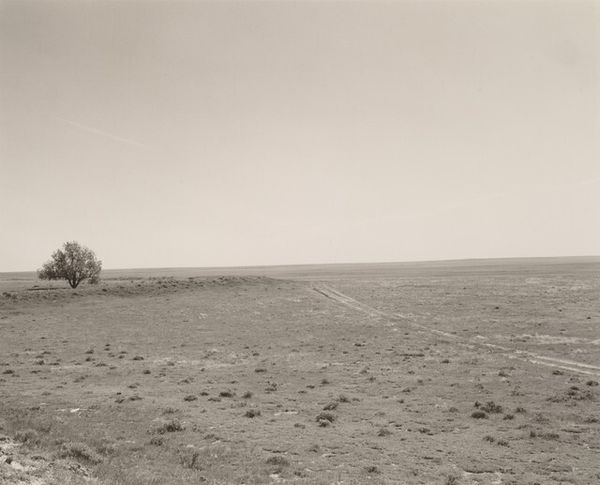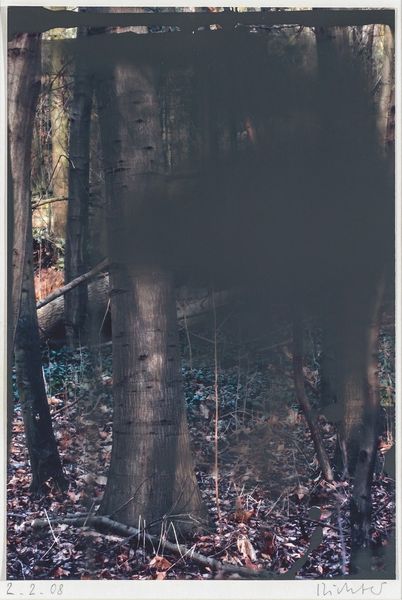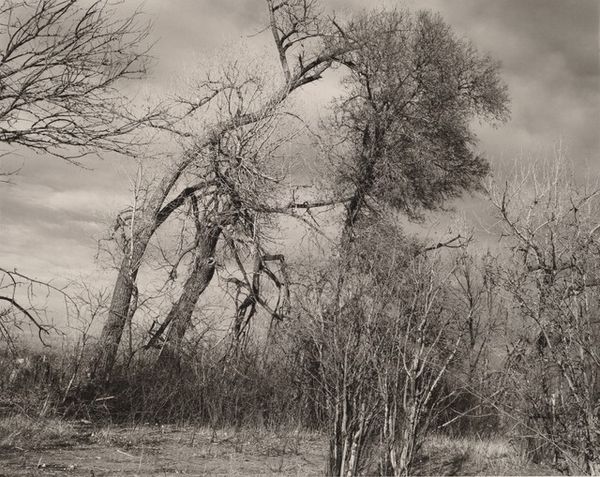
photography
#
still-life-photography
#
contemporary
#
landscape
#
photography
#
environmental-art
Dimensions: image/sheet (each): 56.7 × 56.9 cm (22 5/16 × 22 3/8 in.) mount (each): 72.71 × 71.76 × 0.5 cm (28 5/8 × 28 1/4 × 3/16 in.)
Copyright: National Gallery of Art: CC0 1.0
Editor: This is Terry Evans’ "Area burned as part of prairie management program," taken in 1999. It's a photograph, split into two panels, showing a landscape of burnt prairie. I’m struck by how the golden light contrasts with the dark, charred earth, giving it a sense of both devastation and renewal. What catches your eye? Curator: The diptych form is immediately interesting. Consider how Evans employs it; does the division create tension, or does it encourage a comparative reading of the landscape elements within each panel? I am drawn to the visual relationships established by the composition. Notice the horizon line; how continuous it is, and what affect that creates? And the artist’s shadow bisecting one panel… Editor: I see what you mean. The continuous horizon does create a sense of unity, but the shadow definitely disrupts that, drawing attention to the artist’s presence and intervention. Is the formal disruption significant? Curator: It is important to observe the tension between pictorial space and surface. Evans is playing with formal devices, flattening pictorial space even while employing light and shadow. Also, let us think about that contrast: the textures and light of the unburnt field with the burnt field where Evans's shadow is cast. What do you observe? Editor: The contrast definitely emphasizes the dual nature of the scene: destruction and the promise of new life. The interplay of light and shadow is really compelling here, especially because you pointed out Evans' flattening pictorial space. Curator: Precisely! The semiotic analysis of shadow indicates something deeper. The composition itself—the contrasting planes and use of light—becomes a powerful language. Editor: That's fascinating. I never considered photography in terms of formal language so directly. Curator: Indeed. Attending to visual clues facilitates profound observations. I will consider the play of space and shadow when evaluating the composition from now on.
Comments
No comments
Be the first to comment and join the conversation on the ultimate creative platform.
